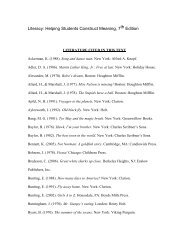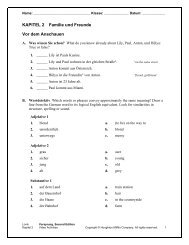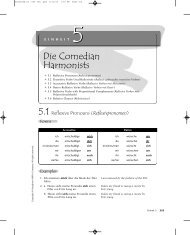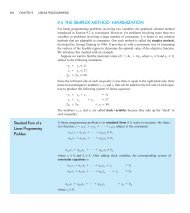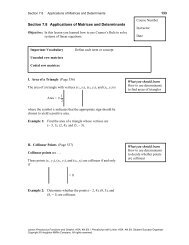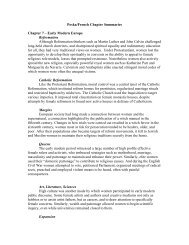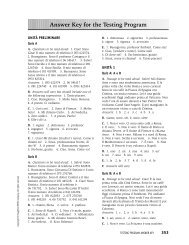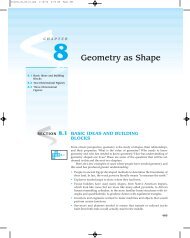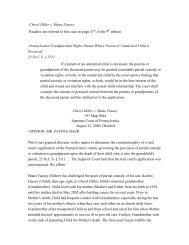Chapter 7: Quantum Theory of the Atom
Chapter 7: Quantum Theory of the Atom
Chapter 7: Quantum Theory of the Atom
You also want an ePaper? Increase the reach of your titles
YUMPU automatically turns print PDFs into web optimized ePapers that Google loves.
58 <strong>Chapter</strong> 7<br />
An atom emits yellow light when an electron makes <strong>the</strong> transition from <strong>the</strong> n = 5 to <strong>the</strong> n = 1<br />
level. In separate experiments, suppose you bombarded <strong>the</strong> n = 1 level <strong>of</strong> this atom with red<br />
light, yellow light (obtained from <strong>the</strong> previous emission), and blue light. In which<br />
experiment or experiments would <strong>the</strong> electron be promoted to <strong>the</strong> n = 5 level?<br />
Solution<br />
In a transition from <strong>the</strong> n = 1 to <strong>the</strong> n = 5 energy level, an atom will absorb a photon with <strong>the</strong><br />
same energy as <strong>the</strong> photon that was emitted in <strong>the</strong> transition from <strong>the</strong> n = 5 to <strong>the</strong> n = 1<br />
energy level. Since yellow light was emitted, <strong>the</strong> experiment using yellow light will promote<br />
<strong>the</strong> electron to <strong>the</strong> n = 5 level.<br />
Conceptual Problem 7.25<br />
Which <strong>of</strong> <strong>the</strong> following particles has <strong>the</strong> longest wavelength?<br />
a. an electron traveling at x m/s<br />
b. a proton traveling at x m/s<br />
c. a proton traveling at 2x m/s<br />
Solution<br />
A proton is approximately 2000 times <strong>the</strong> weight <strong>of</strong> an electron. Also, from <strong>the</strong> de Broglie<br />
relation, l = h/mv, you see that <strong>the</strong> wavelength is inversely proportional to both <strong>the</strong> mass and<br />
<strong>the</strong> speed <strong>of</strong> <strong>the</strong> particle. Considering <strong>the</strong> protons in parts b. and c., since <strong>the</strong> mass is <strong>the</strong> same<br />
in both parts, <strong>the</strong> proton with <strong>the</strong> smaller speed, part b., will have a longer wavelength. Now,<br />
comparing <strong>the</strong> electron in part a. with <strong>the</strong> proton in part b., since both have <strong>the</strong> same speed,<br />
<strong>the</strong> electron in part a. with <strong>the</strong> smaller mass will have <strong>the</strong> longer wavelength. Therefore, <strong>the</strong><br />
electron in part a. will have <strong>the</strong> longest wavelength.<br />
Conceptual Problem 7.26<br />
Imagine a world in which <strong>the</strong> rule for <strong>the</strong> l quantum number is that values start with 1 and go<br />
up to n. The rules for <strong>the</strong> n and ml quantum numbers are unchanged from those <strong>of</strong> our world.<br />
Write <strong>the</strong> quantum numbers for <strong>the</strong> first two shells (i.e., n = 1 and n = 2).<br />
Solution<br />
For <strong>the</strong> first shell, <strong>the</strong> quantum numbers would have <strong>the</strong> following allowable values:<br />
n = 1; l = 1; ml = 0, +1, -1.<br />
For <strong>the</strong> second shell, <strong>the</strong> quantum numbers would have <strong>the</strong> following allowable values:<br />
n = 2; l = 1; ml = 0, +1, -1<br />
l = 2; ml = 0, +1, -1, +2, -2




